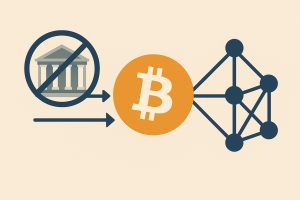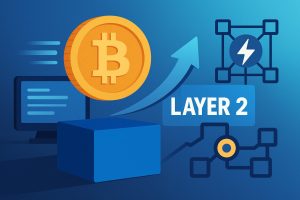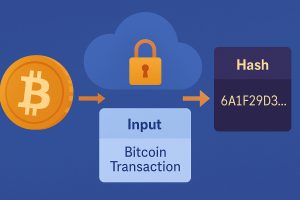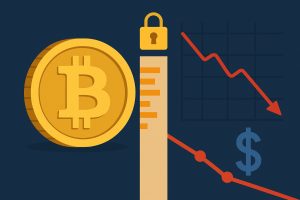The Backbone of Bitcoin: Understanding Mining’s Role
Bitcoin mining lies at the heart of the Bitcoin network, serving as the process that validates transactions, maintains the blockchain’s integrity, and introduces new coins into circulation. Without mining, Bitcoin’s decentralized ecosystem would not function, and its promise of trustless financial transactions would remain unfulfilled.
This guide aims to demystify Bitcoin mining, breaking down its complex processes and explaining why it matters in the larger context of cryptocurrency and blockchain technology. Whether you’re a curious beginner or an aspiring miner, this article will equip you with the foundational knowledge to understand Bitcoin mining’s pivotal role in the digital economy.
What Is Bitcoin Mining?
Bitcoin mining is the process of validating and recording transactions on the blockchain, a decentralized digital ledger. It ensures that the Bitcoin network operates securely and transparently by solving a critical problem: how to achieve consensus among participants without a central authority.
How Bitcoin Mining Works
Miners use specialized hardware to solve complex mathematical puzzles, which confirm transactions and group them into blocks. Once a block is verified, it is added to the blockchain. This system not only secures the network but also prevents double-spending, a potential flaw where the same Bitcoin could be spent twice.
Mining also serves as the mechanism for minting new Bitcoin. Each verified block rewards miners with a set amount of Bitcoin, creating a self-sustaining incentive system that encourages participants to contribute computing power to the network.
How Bitcoin Mining Works
The intricacies of Bitcoin mining involve a combination of computational effort, cryptographic algorithms, and incentives designed to maintain a decentralized system.
The Role of Miners
Miners play the crucial role of validators within the Bitcoin network. When a Bitcoin transaction occurs, it is broadcast to the network and grouped into a pool of unconfirmed transactions. Miners compete to organize these transactions into blocks by solving mathematical puzzles—a process that requires significant computational power.
The competition is a race to find a unique numerical solution called a “hash.” The first miner to solve the puzzle adds the block to the blockchain, earning Bitcoin as a reward for their efforts.
Proof-of-Work Mechanism
Bitcoin mining operates on a proof-of-work (PoW) consensus mechanism. PoW requires miners to perform complex calculations, demonstrating computational effort before a block can be added to the blockchain. This effort ensures that malicious actors cannot easily manipulate the system, as altering past blocks would require re-mining every subsequent block.
Proof-of-work’s significance lies in its ability to maintain decentralization and prevent double-spending. While energy-intensive, it creates a secure and immutable network that relies on global participation.
Mining Rewards
Miners are incentivized through block rewards, which are newly minted Bitcoin awarded for validating blocks. However, this reward decreases over time through a process called halving. Approximately every four years, the reward is cut in half, reducing the rate at which new Bitcoin is introduced into circulation. Halving events create scarcity, influencing Bitcoin’s price and mining profitability.
Equipment and Tools for Bitcoin Mining
Bitcoin mining requires specialized equipment and software tailored to maximize efficiency and profitability.
Types of Mining Hardware
- ASICs (Application-Specific Integrated Circuits): These are purpose-built machines designed exclusively for Bitcoin mining. ASICs are highly efficient and dominate the mining industry due to their superior performance.
- GPUs (Graphics Processing Units): While initially used for mining, GPUs are now less common for Bitcoin due to the rise of ASICs. However, they remain popular for mining other cryptocurrencies.
- CPU Mining: Early Bitcoin miners used standard CPUs (central processing units). Today, CPU mining is largely obsolete for Bitcoin due to its inefficiency compared to ASICs and GPUs.
Mining Software
Mining software serves as the interface between the hardware and the Bitcoin network. Popular options include:
- CGMiner: A versatile program with extensive customization options.
- BFGMiner: Known for its modularity and remote mining capabilities.
- NiceHash: A user-friendly platform that simplifies mining for beginners.
Selecting the right hardware and software combination is essential for optimizing mining operations.
Economics of Bitcoin Mining
Mining Bitcoin is not just a technical endeavor; it’s also an economic calculation. Understanding the costs and potential profitability is critical before investing in mining.
Costs Associated with Mining
Mining involves significant upfront and ongoing expenses:
- Hardware Costs: ASICs and other mining equipment require a substantial initial investment.
- Electricity Costs: Mining is energy-intensive, and electricity bills can constitute a significant portion of operating expenses.
- Maintenance: Hardware requires regular upkeep to maintain optimal performance.
Geographic location plays a role in mining economics, as regions with affordable electricity, such as Iceland or China, often attract large-scale mining operations.
Is Bitcoin Mining Profitable?
Profitability depends on several factors, including Bitcoin’s market price, mining difficulty, and electricity rates. Tools like mining calculators allow miners to estimate their potential returns by factoring in these variables. Additionally, organizing Bitcoin trading data effectively can help miners track expenses, optimize operations, and make informed financial decisions.
Environmental Impact of Mining
Bitcoin mining’s energy consumption has drawn criticism for its environmental impact. The proof-of-work mechanism requires vast amounts of electricity, much of which comes from fossil fuels. Critics argue that this contributes to Bitcoin’s carbon footprint, raising questions about its sustainability.
Sustainable Mining Practices
To address these concerns, many miners are adopting renewable energy sources such as hydroelectric, solar, and wind power. Mining pools, which combine resources from multiple participants, also improve efficiency by reducing individual energy requirements.
Innovations like stranded energy mining—using excess energy from renewable sources—further demonstrate how the industry is working to reduce its environmental impact while maintaining network security.
Mining’s Role in the Future of Bitcoin
Bitcoin mining is integral to the network’s operation, providing security, transparency, and a method for issuing new coins. However, its future will likely be shaped by technological advancements and economic considerations.
Innovations in Mining
Developments like more energy-efficient mining hardware and alternative consensus mechanisms could address scalability and environmental challenges. The integration of renewable energy into mining operations will also play a critical role in ensuring Bitcoin’s long-term sustainability.
Economic Implications
As block rewards diminish due to halving, transaction fees are expected to become the primary incentive for miners. This shift will require adjustments to ensure mining remains profitable while maintaining the network’s integrity.
Exploring the World of Bitcoin Mining
Bitcoin mining is the foundation of the Bitcoin ecosystem, ensuring the security and functionality of the network while introducing new coins into circulation. By understanding the processes, tools, and challenges associated with mining, you gain insight into one of the most critical aspects of cryptocurrency.
Whether you’re considering mining as an investment or simply seeking to understand its role in the blockchain, exploring this dynamic industry reveals the complexity and innovation driving Bitcoin’s continued success.
















No Responses